QUESTIONS TO ASK WHEN BUYING AN OFF-ROAD AUTOMATIC GREASING SYSTEM
COMPARE APPLES TO APPLES WHEN SOURCING AN AUTOMATIC GREASING SYSTEM
There are several manufacturers offering automatic greasing systems for off-road equipment in the industry today, so when you’re sourcing a system, it’s important to make sure you’re comparing apples to apples. Ask the following questions:
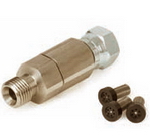
Does the pump package include a high-pressure, inline, lubricant filter?
A filter prevents contaminants that can cause grease system failure, costly component replacement and labour costs from being introduced into the distribution lines. For most greasing system manufacturers, a filter IS NOT supplied as standard – it must be specified. Every FLO greasing system comes standard with a high pressure, inline, lubricant filter included with the pump package.
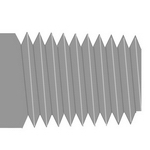
Are the hose and grease fittings standard NPT thread?
Some grease system manufacturers use metric hose ends and fittings. Special adapters are required to adapt to NPT bearing inlets causing increased costs and labour and possible delays during servicing. All FLO system hose and grease fittings are standard re-usable NPT threads.
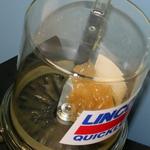
Does the pump reservoir incorporate a revolving paddle or a follower plate?
A FLO pump with transparent reservoir and revolving paddle eliminates grease cavitations (air bubbles in the grease that can cause system failure if they enter the greasing system) and offers visual grease level monitoring. It also functions as a visual indicator to the operator that there is a problem if the paddle stops turning.
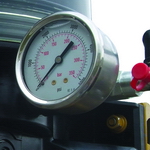
Does the greasing system include a pressure gauge?
A pressure gauge allows for visual monitoring of the automatic greasing system pressure during regular maintenance inspections. For most greasing system manufacturers, a pressure gauge IS NOT supplied as standard – it must be specified. Every FLO greasing system comes standard with a pressure gauge installed at the pump.
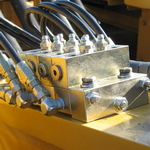 Do the grease metering valves incorporate high-pressure, manual grease fittings?
Do the grease metering valves incorporate high-pressure, manual grease fittings?
Having a manual grease fitting at every metering valve allows for easier trouble-shooting, servicing, priming and flushing of grease lines. Not having a manual grease fitting means lines have to be disconnected to perform many of these tasks, substantially increasing labour costs. Most manufacturers either DO NOT include grease fittings, or use standard grease fittings which leak when faced with the high back pressure of a blocked line. FLO uses grease fittings specifically designed to handle high back pressure so in the unlikely event of a blocked line, the only leak will occur where the machine operator will see it – at the pressure relief valve on the pump package. FLO installs these fittings on every metering valve in the greasing system.
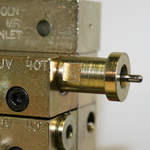
How do you know if a bearing is not getting grease?
With a progressive automatic greasing system, the divider valves work in series to each other. FLO incorporates a cycle indicator pin (CIP) at the master divider valve assembly to provide visual confirmation of system cycling every time. If any line/bearing is not taking grease the entire greasing system shuts down and there is visual indication (CIP + pressure gauge) to the operator that there is a problem, allowing the operator an opportunity to take action before any damage occurs. The pump is mounted in a location readily visible to the operator.


